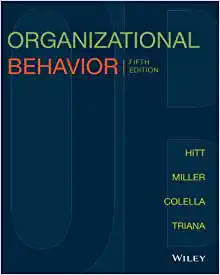While you may subscribe to the philosophy that all humans are innately creative, life has innumerable ways
Question:
While you may subscribe to the philosophy that all humans are innately creative, life has innumerable ways to condition your learners to believe or not believe they are creative persons. This assessment will tap into that self-image. The results will give them one more way to gauge how they may fit in certain organizations. It may be a rather hard tallying a score between 129 and 50. If they answered honestly, these folks are looking at “Not very creative” or even “Noncreative.” Others will be in the “Neither creative nor noncreative range.” Puzzling? The rest score in “Somewhat creative and Very creative” ranges. It does take all kinds of people to keep a company growing. However, the supply of routine roles in stable environments seems to be dwindling. Companies with organic structures like Google need people who can create new knowledge to close gaps of uncertainty that suddenly open beneath their feet. As is mentioned in this chapter, modern companies are trending away from mechanistic, routine bound styles to the organic. What will the Non- or Not-very-creative-types to do? Recover some of what has been lost.
Questions:
1. Ask your students to think of the rest of their college education as a massive Creativity Recovery Operation.
2. Suggest that creativity teemed in all of us as young children. Over the years to adulthood, creativity did not leave them. It was just pushed to the back by a programmable intellect. Challenge the notion of Noncreative. It gave way, in varying degrees in each of them, to the more routine, rational, rule-bound ways of managing their work lives. Ask them to accept that creativity did not, however, subside that far from their reach. Indeed, for every non-creative thought and act, there lurks a creative flip side.
3. The more practice learners require of themselves in flipping their conventional, hide-bound responses to tasks, the more they will recover the use of their ingenuity. A few simple creativity exercises will not be enough. College courses present plenty of tasks that can be flipped to the creative side. This course, for example, has already called for much more than using rote memory to pass true/false and multiple-choice tests.
4. This assessment is a fresh example. They could fill in their choices from strongly disagree to strongly agree, tally the score, note “verdict” and be done with it. They could recover another bit of latent creativity by playing with the score. They can imagine a business card: “John Doe, Noncreative. Will work for job security.” They can run their imagination backwards like reversing a video, hitting a mental “stop,” picturing losing a particularly large clump of creativity.
5. Suggest they make brief notations in the calendars of their PDAs, iPhones, etc. of moments when they flipped over still another task in still another college assignment and found the creative notions that had been lying beneath, stifling a chuckle at how they bought into the belief that they were about as creative as they’d ever be.
Step by Step Answer:






